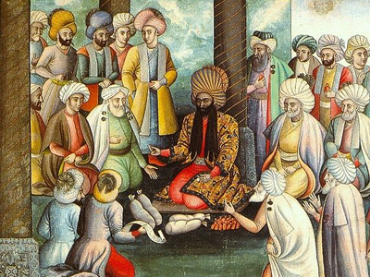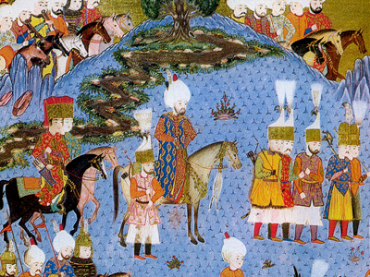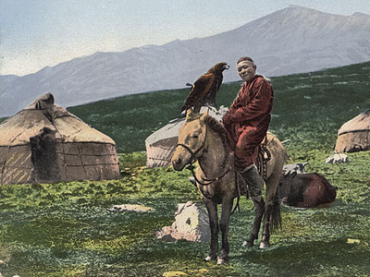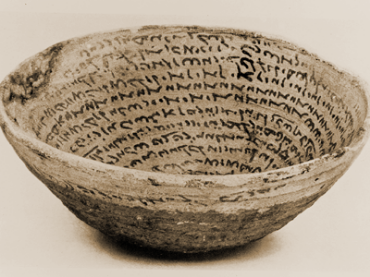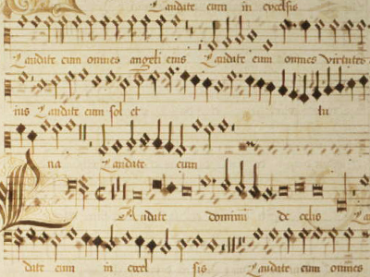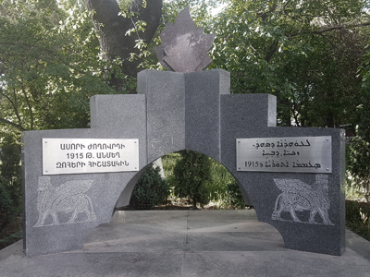History
The Lighthouse of the Syriac Church of Antioch
By Aphram I Barsoum; Introduction by Gregorios Yohanna Ibrahim
ISBN: 978-1-60724-169-0
This book is a collection of articles written by the eminent scholar and Syrian Orthodox Patriarch Ephrem Barsaum. The “Lighthouse” in the book is meant to refer to the thought of Patriarch Barsaum: like a lighthouse, every researcher, scholar, or reader of Syriac must turn towards it for guidance. The articles in this volume display Barsoum’s characteristic erudition and scholarly thoroughness and cover a wide variety of topics, all related to the history of the various Syriac-speaking churches and the churches of Antioch, in addition to other Middle Eastern Churches.
$142.00
Selections from the Memre of Jacob of Sarugh
Translated by Militos Barnaba; Introduction by Gregorios Yohanna Ibrahim
ISBN: 978-1-60724-170-6
Militos Barnaba has chosen 20 of the most beautiful memre of Jacob of Sarugh and here provided a sense-for-sense translation of them into Arabic. For each memra a short excerpt of the Syriac original is given, followed by an Arabic translation of the entire piece. An introduction by Bishop Gregorios Yohanna Ibrahim provides background on the life and writings of Jacob of Sarugh.
$169.00
His Life and Works
ISBN: 978-1-60724-171-3
Philoxenos Yuhanna Dolabani (1885-1969), Metropolitan of Mardin, was an important figure in the Syrian Orthodox church in the twentieth century and a prolific scholar, most of whose works remain unpublished and unknown to Western scholarship. Bishop Gregorios Yohanna Ibrahim has here given us a biography of this key figure.
$158.00
The first unofficial consultation on dialogue within the Syriac tradition. Pro Oriente 1994
Translated by Marcel Taraqji
ISBN: 978-1-60724-172-0
This volume is a translation into Arabic of the papers published as part of the Pro-Oriente ecumenical consultation between members of Roman Catholic, Chaldean Catholic, Syro-Malankar and Assyrian Orthodox Churches, originally published in Vienna in 1994. Participants included both European and Middle Eastern scholars and paper topics covered a range of issues relating to both the history and theology of the Church of the East.
$195.00
Second non-official consultation on dialogue within the Syriac tradition. Pro Oriente 1996
Translated by Marcel Taraqji
ISBN: 978-1-60724-173-7
This volume is a translation into Arabic of the papers and discussions published as part of the Pro-Oriente ecumenical consultation between members of Roman Catholic, Chaldean Catholic, Syro-Malankar, Syrian Orthodox, Maronite, and Assyrian Orthodox Churches, originally published in Vienna in 1994. Many of the papers in this volume are commentaries by members of the various churches represented at the consultation on the joint declaration issued by Pope John Paul II and Patriarch Denha IV. A number of other papers seeks to address the question of whether the Council of Ephesus unites or divides.
$203.00
The Province, Study and Advantage of Ecclesiatical History
Lectures on the History of the Eastern Church
Series: Analecta Gorgiana 163
ISBN: 978-1-60724-178-2
Extracted from Arthur Penrhyn Stanley’s Lectures on the History of the Eastern Church, this introduction to ecclesiastical history is a tribute to the insight of a former professor of ecclesiastical history at Oxford. Stanley’s introduction covers three main areas: the province of ecclesiastical history, the study of ecclesiastical history, and the advantages of such study.
$42.00
The Eastern Church
Lectures on the History of the Eastern Church
Series: Analecta Gorgiana 164
ISBN: 978-1-60724-179-9
Extracted from Arthur Penrhyn Stanley’s Lectures on the History of the Eastern Church, this initial essay lays out his general perceptions of the Eastern Church. He considers the divisions of the church, the historical epochs into which it falls, and the general characteristics and the advantage of studying them.
$41.00
The Council of Nicea
Lectures on the History of the Eastern Church
Series: Analecta Gorgiana 165
ISBN: 978-1-60724-180-5
Extracted from Arthur Penrhyn Stanley’s Lectures on the History of the Eastern Church, this set of lectures focuses on the Council of Nicea. Divided into four separate lectures, it begins with a detailed general overview, the contents and participants of the council, a consideration of its opening and the final results of its closing.
$54.00
Constantine and Athanasius
Lectures on the History of the Eastern Church
Series: Analecta Gorgiana 166
ISBN: 978-1-60724-181-2
Extracted from Arthur Penrhyn Stanley’s Lectures on the History of the Eastern Church, this set of lectures examines two of the most famous participants of the Council of Nicea, the Emperor Constantine and Saint Athanasius. Together these two figures largely define the Council of Nicea, and their portraits are vividly portrayed here by an eminent church historian.
$44.00
The Russian Church
Lectures on the History of the Eastern Church
Series: Analecta Gorgiana 167
ISBN: 978-1-60724-182-9
Extracted from Arthur Penrhyn Stanley’s Lectures on the History of the Eastern Church, this set of lectures covers the Russian Church. Stanley begins with the conversion of Russia and moves through the Middle Ages and concentrates on Patriarch Nicon and the reformations in the church under Peter the Great.
$56.00
The Liturgy of Constantinople
Antient Liturgies
Series: Analecta Gorgiana 170
ISBN: 978-1-60724-185-0
C. E. Hammond's Antient Liturgies provided a valuable resource at an early stage in comparative liturgical studies. Free of extensive critical apparatus, Antient Liturgies presents a collection of historic forms of worship from the Western, Eastern, and Oriental Churches. This extract from the book focuses on the Liturgy of Constantinople. As Hammond explains, this liturgy contains elements of the St. Basil, St. Chrysostom, and Presanctified liturgies presented in Greek. As an analytical introduction this early study continues to provide a broad overview of early Christian worship made available in an accessible and convenient format for students and scholars.
$43.00
Handmaids of the Lord
Contemporary Descriptions of Feminine Asceticism in the First Six Christian Centuries
Edited and Translated by Joan M. Petersen
Series: Monastic Studies Series 33
ISBN: 978-1-60724-211-6
Throughout the Christian world, women have chosen to lead disciplined lives of prayer and asceticism. Descriptions of early role-models—Macrina, the two Paulas and Melanias, Radagunde—and others by contemporaries, usually men, provide details of their austerities, their aspirations, and their relationship with the Church and the world, not least with male authority figures.
$192.00
Mount Sinai
A Modern Pilgrimage
Series: Kiraz Historic Travels Archive 22
ISBN: 978-1-60724-243-7
This timeless travelogue by noted hymnographer and missionary A. Mary R. Dobson recounts her journey to the manuscript-rich monastery of St. Catherine’s in the Sinai peninsula. Traveling with her cousin, Orientatlist Rendel Harris, Dobson wrote an account of her journey that still captures the imagination of modern day readers.
$124.00
The Early History of Syria and Palestine
Series: Kiraz Classic Archaeological Reprints 8
ISBN: 978-1-60724-244-4
Although written before the modern discoveries that define Ancient Near Eastern studies today, Paton’s historic foray into the history of Syria and Palestine served to start a continuing discussion that remains active today. Covering the Babylonian, Aramaean, Egyptian, Hittite, and Assyrian empires, Paton demonstrates what was known of the history of the region with the limited resources of nineteenth-century explorations.
$189.00
Malphono Shukri Taraqji—His Life and Writings
ISBN: 978-1-60724-248-2
Shukri Taraqji (1911-1982) was an important figure in the Syriac literary revival of the twentieth century and this small volume collects a number of his writings into one convenient place. An introduction by Bishop Gregorios Yohanna Ibrahim provides an account of Taraqji’s life and activities, both professional and ecclesiastical. This volume will be of great interest to anyone interested in the contemporary history of Syrian Orthodox Christianity, Syriac, and Middle Eastern Christianity.
$118.00
Establishment – Development 1924-2004
By Sara Doghramji; Introduction by Gregorios Yohanna Ibrahim
ISBN: 978-1-60724-249-9
After the expulsion of the Syrian Orthodox community from Edessa in 1924, they found refuge in Aleppo. One of the first things the community did upon its settling in Aleppo was found a school where its youth were taught the Syriac language and important melodies and prayers from the liturgy, among other things. This school was the ancestor of the Syrian Orthodox school of Aleppo which is today called by the name of Bani Taghlib, and in this book Sara Doghramji has given us a history of this institution, from its founding in 1927 to the present.
$171.00
The Aramaic Influence in the Vernacular of Sadad
By Fadel M. Mubaraka; Edited with an Introduction by Gregorios Yohanna Ibrahim
ISBN: 978-1-60724-250-5
Fadel Mubaraka has here given us a study of the linguistic survivals of Aramaic in the Arabic dialect of the town of Sadad, in Syria, home to a large Syrian Orthodox community. Arranged alphabetically in the style of a dictionary, Mubaraka lists hundreds of different Arabic words, defines them, and then discusses their Aramaic etymology. Although the focus is on the specific dialect of Sadad, Mubaraka’s work and the words he discusses are not necessarily only to be found in this one location. This work will therefore be of great value to all interested in Arabic dialectology, the Aramaic influence on colloquial Arabic, and in the cultural history of the Levant.
$239.00
Catalogue of the Syriac Manuscripts in St. Mark’s Monastery
By Yuhanna Dolabani; Edited with an Introduction by Gregorios Yohanna Ibrahim
ISBN: 978-1-60724-251-2
This book is a reproduction of Philoxenos Dolabani’s handwritten catalogue of the Syriac, Karshuni, and Arabic manuscripts located in St. Mark’s Syrian Orthodox Monastery in Jerusalem, one of the most important Christian manuscript collections in the Middle East.
$218.00
Catalogue of Syriac Manuscripts in Za‘faran Monastery
By Yuhanna Dolabani; Edited with an Introduction by Gregorios Yohanna Ibrahim
ISBN: 978-1-60724-252-9
This book is a reproduction of Philoxenos Dolabani’s handwritten catalog of the manuscripts contained at Dayr al-Za‘faran. Dolabani was one of the greatest scholars of Syriac in the twentieth century and he made the catalogue while still a monk. This work, two volumes combined under one cover, is an important resource for all interested in Syriac and Christian Arabic.
$283.00
Catalogue of Syriac Manuscripts in Syrian Churches and Monasteries
By Yuhanna Dolabani; Edited with an Introduction by Gregorios Yohanna Ibrahim
ISBN: 978-1-60724-259-8
This book is a collection of a number of small catalogues and hand-lists of manuscripts held in the possession of Syrian Orthodox churches, monasteries, and even individuals throughout the Middle East. The eminent scholar and bishop, Philoxenos Dolabani, carried out the enormous task of cataloguing and describing these little-known and difficult-to-access collections.
$203.00
Lamp of the Sanctuary by Mar Gregorios Yohanna Bar Ebroyo Maphryono D-Madnho
Translated by Dionisios Behnam Jijawi; Introduction by Gregorios Yohanna Ibrahim
ISBN: 978-1-60724-260-4
The Lamp of the Sanctuary is the most important theological encyclopedia in the Syriac language and its author Gregory Bar Hebraeus was perhaps the greatest polymath ever to write in Syriac. The book is divided into twelve different sections which span the breadth of medieval theology.
$311.00
Wort und Wahrheit
Revue for Religion and Culture. Supplementary Issue Number 1. First non-official Ecumenical Consultation between Theologians of the Oriental Orthodox Churches and the Roman Catholic Church. Vienna-Lainz September 7-12 1971
Translated by Maurice Khuri Taraqji; Introduction by Gregorios Yohanna Ibrahim
ISBN: 978-1-60724-261-1
This is a translation into Arabic of Wort und Wahrheit: Revue for Religion and Culture, Supplementary Issue Number 1, which contained the papers and minutes of the first non-official ecumenical consultation between Oriental Orthodox and Roman Catholic theologians, sponsored by Pro Oriente, the ecumenical foundation. This volume contains a number of papers by Oriental Orthodox and Roman Catholic theologians relating to Christology, Monophysitism and Dyophysitism, and the acceptance of the Council of Chalcedon.
$198.00
Arabic-Syriac Dictionary
By Mikhael Murad; Edited by Gregorios Yohanna Ibrahim
ISBN: 978-1-60724-262-8
This book is a reprint of Murad’s Arabic-Syriac dictionary, the first such dictionary ever composed, and the only work of the author. The present volume extends from the letter alif to the beginning of the letter sin; the second half of the dictionary has unfortunately been lost. For each Arabic word given, a number of Syriac equivalents are recorded. The dictionary also gives Syriac equivalents to Arabic idioms.
$270.00
Accepting the Other
ISBN: 978-1-60724-263-5
Written by the eminent Syrian Orthodox Metropolitan of Aleppo, Accepting the Other, offers an eloquent and alternative perspective to the question of religious co-existence and the so-called ‘Clash of Civilizations.’ Bishop Gregorios’ book begins with an historical overview of the presence of Christians in the Middle East and their rich cultural contributions to the region, stretching back to the days of the Roman Empire and discusses the Islamic conquests and the Crusades from the little-heard yet extremely important Middle Eastern Christian perspective; he also offers examples of Christian-Muslim co-existence and discusses the question of citizenship.
$169.00
Syrian Orthodox Music
ISBN: 978-1-60724-264-2
This book originated in Bishop Yohanna Gregorios’ dissatisfaction with the lack of a study which would show where the music of the Syrian church came from, how it was accepted in the church, the basis on which it entered the church, the regional variation in chanting traditions, and the development of church music through time.
$127.00
Filter by
Filter by price
Filter by manufacturer

